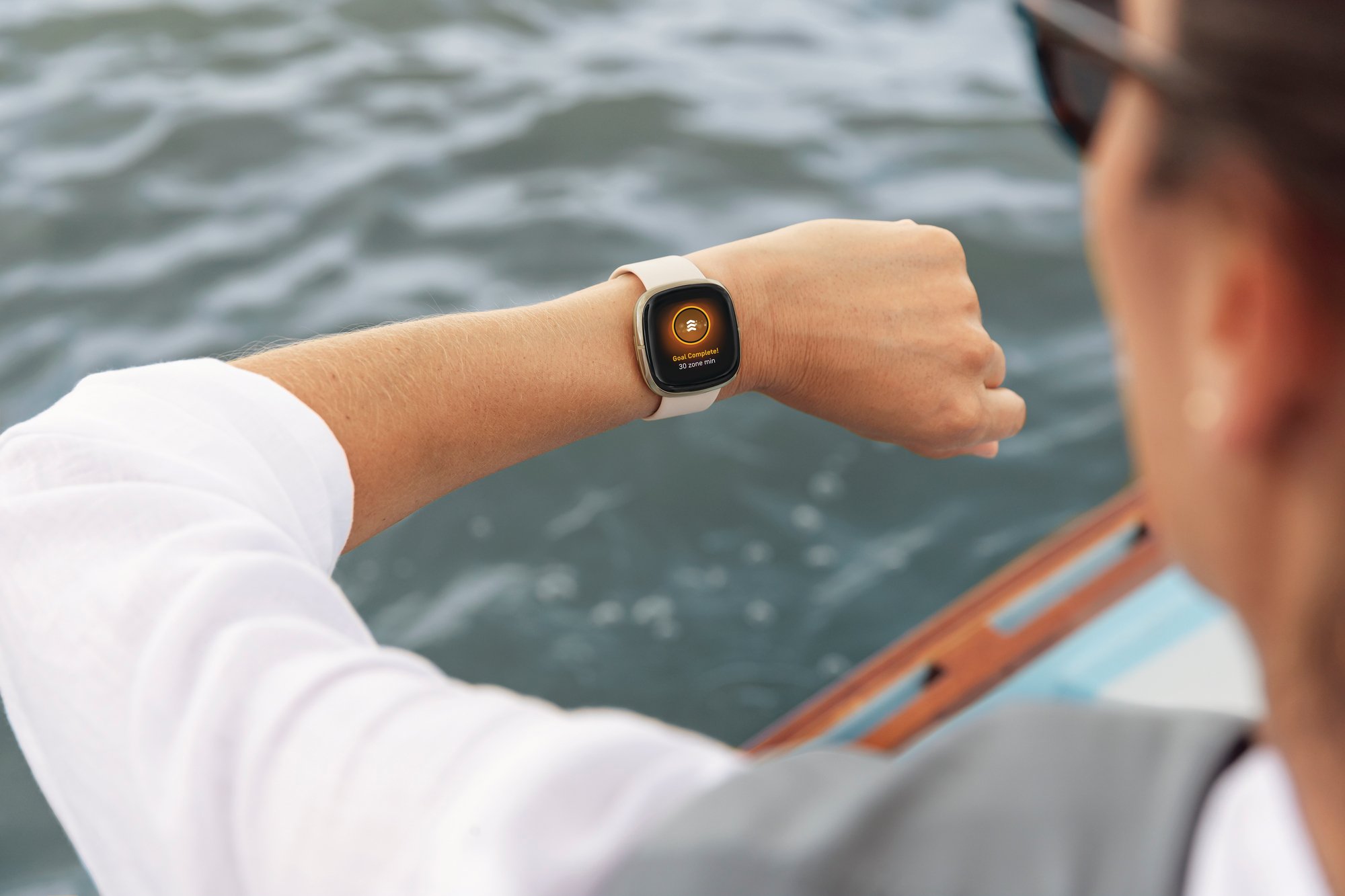In June, fitness wearables company Fitbit (FIT +0.00%) published a document titled Fitbit Profile and Update. The document covered key financials and the turnaround plans for 2017 and included the slide below, titled "tech-enabled health revolution."

Image Source: Fitbit
I was able to talk with Tom Hudson, Fitbit's vice president of investor relations, about the slide and how Fitbit sees itself playing in the tech-enabled health revolution. Read on to see what I learned about the slide above.

Image Source: Fitbit
Chronic disease
Tom Rath, author of the New York Times best-seller Eat, Move, Sleep, put together an impressive body of research supporting the belief that our behaviors are bigger determining factors on how long we live than heredity. One study he referenced indicated that people could have a 90% chance to live to 90 or 100 by following seven habits including being active, maintaining a healthy weight, managing diabetes, and knowing and controlling blood pressure. In my discussion with Hudson, he mentioned diabetes, stress, and hypertension as conditions impacted by our daily habits.
Healthcare costs
The U.S. Centers for Medicare and Medicaid services released a study in 2015 that said healthcare costs in the U.S. totaled $3.2 trillion for the year and were 17.8% of the U.S. economy. The Peter Peterson Foundation indicated that these costs are only going to get worse and could become as much as 25% of the economy by 2040. Hudson indicated that diabetes is a huge contributor to these costs. In 2012, American Diabetes association reported $245 billion in healthcare costs and reduced productivity.
Cost burden
As companies try to cope with the rising healthcare costs of insured employees, some of the burden is being passed on to individuals. A study by the Kaiser Family Foundation indicated that since 1999 worker contributions for families rose from $1,543 per year to $5,277 per year in 2016, an average of 10.4% increase in premiums every year.
Hudson indicated that employees are now having to sort through different healthcare providers with multiple service plans. He went on to say the amount of health-related information now available for consumers via the internet is more plentiful than ever before. Additionally, he added big pharma and other medical companies are spending more marketing money, advertising directly to consumers.
As a result, consumers are now more informed than ever, getting more involved in the decisions related to their health, and taking control of their health outcomes. This is what Fitbit refers to as the consumerization of the healthcare industry.
Tracking devices
Fitness trackers and mobile phone fitness apps are tracking more data than ever: sleep, steps, exercise, and heart rate. With a little effort, individuals can track the food they eat, their weight, and how they feel. With all of this data trackability and the proven correlation of activity to better health, companies are turning to wearable devices to be part of wellness programs. Hudson indicated when a company incorporates wearable devices into their corporate wellness program, overall engagement increases, employees experience better health outcomes, and the company experiences lower health-care costs.

Image source: Getty Images.
UnitedHealthcare (UHC) determined a correlation between an individual's average steps per day and the annual claims costs (more steps = less cost). This was the driver behind the UHC Motion program, where individuals can earn up to $1,500 toward their healthcare costs. While the rules for the program are somewhat complicated, measuring frequency, intensity, and tenacity, Fitbit has programmed the Charge 2 to simply display a user's progress on their wearable device. Having the real-time status visible with you all day makes it more likely for you to achieve the program goals. These kinds of individualized programs will be easier to create when Fitbit releases its smartwatch and app gallery later in the year.
How does Fitbit play into these trends?
Hudson reiterated what CEO James Park said in the most recent earnings call about the assets that Fitbit brings to the table for participating in these trends: the Fitbit brand, its community of users, and its data.
First the brand is strong. From its beginning, Fitbit was known for health and fitness. While other smartwatches have been more general purpose devices, Fitbit's devices were focused on health and fitness. Park said on the earnings call that 95% of all National Institute of Health studies in which physical activity is a study input use Fitbit devices. Fitbit's brand has always been accessible regardless whether you are using Android, iOS, or Windows Phone, which is a key differentiator from devices that only work on one operating system.
Second, Fitbit's community provides support and inspiration for users. Fitbit reported 23.2 million active users in early 2017. Fitbit has seen success with its Feed feature, which allows users to connect to other Fitbit users who have similar interests or health goals. Over 11.2 million users have used the feature with over 648 million pages views, and 2.5 million have joined one of the twenty-plus groups focused on specific health and fitness areas.
Lastly, the company has lots of data on device owners. Fitbit has built one of the largest health databases in the world. To give you an idea of the size, Fitbit has tracked over 4 billion hours of sleep since 2010, which enabled the company to release the sleep stages feature in April, which tracks how deeply you are sleeping based on heart rate motion. Fitbit says it can offer "relevant tips for improving your sleep quality and your nightly routine." Other fitness-related Fitbit insights can be used to provide personalized coaching.
At the end of the prepared remarks in the most recent earnings call, Park summarized where the company stands today.
... we have a firm vision for the future. Devices are a means to an end. Leveraging our brand, community and data, Fitbit is in the business of driving positive health outcomes.
It seems Fitbit has a good handle on the healthcare landscape and what it can do to help people live longer and healthier lives. That's important for the long term health of Fitbit.





